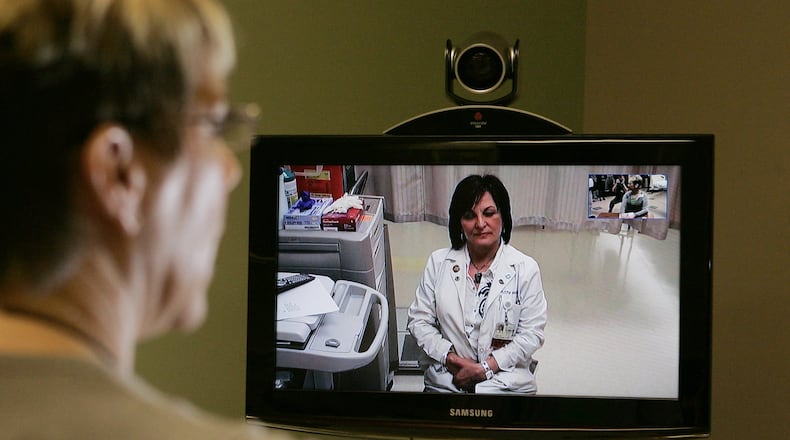“We’re trying to manage as many patients that we safely can over the phone, virtually,” Anna Roetker, the medical director for the Community Health Centers of Greater Dayton, said, “And keeping people that are well-controlled at home and just managing them that way until the foreseeable future.”
Coronavirus: Complete Coverage
State and federal regulations have been rolled back to allow doctors and patients to stay connected despite social distancing orders. Medical professionals say some routine check-ins can be safely moved online to help curb the spread of COVID-19.
“Enabling this full array of services both medical and behavioral health to be done remotely or through phone or video is an important way for us to take pressure off emergency rooms or hospitals while allowing Ohioans to be able to receive good quality care,” Ohio Department of Medicaid Director Maureen Corcoran said at a press conference earlier this month.
The Community Health Centers’ prior efforts to embrace telehealth fell flat because online check-ups weren’t reimbursed in the same way that in-person ones were, Roetker said. Now, thanks to state efforts with regard to telemedicine, doctors can video conference and call with patients without worrying about a lack of reimbursements.
MORE: What coronavirus means for local seniors and services
Dayton-based CareSource has long insured telehealth, Jonas Thom, its vice president of Behavior Health, said. Thom emphasized the importance of staying connected to physicians, therapists, and other kinds of providers during the pandemic.
“It may be a silver lining, in this response to a pandemic, that we all become a little more comfortable at using remote services and access to care,” Thom said. “To not just get direct clinical care, but to augment and supplement our direct medical care with these other tools and resources that are available.”
With the changes, however, come challenges. Some patients might be resistant to moving their private check ups onto video calls, and others might not have broadband at home.
MORE: House passes $2.2T rescue package, rushes it to Trump
Thom and Roetker both acknowledged the challenges surrounding a sudden move to telehealth. Like professors at universities suddenly conducting classes online, doctors and patients alike are having to adapt to a new kind of appointment.
Thom said that the rolled-back regulations allow for conferencing via telephone, which could help those who don’t have access to broadband at home.
“The use of telephone means that folks have the simple communications channels that are available to folks without more sophisticated equipment or access,” he said. “We’ll see if those are utilized in the ways that we hope they are. The broadband divide, or poverty in general, always is a problem in terms of material access”
Some patients, of course, will still need in-person visits. PriMed Physicians, which has locations throughout the Miami Valley, is taking steps to make sure patients are safe during a visit.
Ted Inman, PriMed’s CEO, said that his company’s offices are remaining open to patients although the physicians are also pivoting toward telehealth. PriMed has eliminated its waiting rooms as a precautionary measure. Now, when patients arrive, they’re assessed in their care before they’re allowed to enter.
Update: All 4 Miami County deaths were coronavirus cases, coroner says
If patients are sick, Inman said, they go into the “red” side of PriMed clinics. If they don’t have symptoms, then they’re allowed into the “green” side. Inman said this allows doctors to better control the flow of patients, and ensures that healthy patients aren’t in the same areas as sick ones.
“We’re trying to make it so that they feel like they could come in,” Inman said of patients, adding that PriMed is encouraging high-risk patients, like the elderly, to stay home if they aren’t sick. “You know, there’s some people who shouldn’t come in.”
PriMed plans to use Zoom, a video-conferencing service, until they can set up an integrated, in-house conferencing system. Inman and other experts acknowledged privacy concerns and cybersecurity threats when it comes to videoconferencing.
Thom said that patients worried about cybersecurity should practice “continued good judgment that you would for any valuable information or privacy concerns that you have.”
Ultimately, health experts say that the coronavirus pandemic could lead to an increased use of telehealth across the board.
“It’s been interesting the dynamics of how quickly it’s moved,” Inman said. “This may enable a change in our healthcare system that was slow in coming, that may now come a lot faster because people are maybe going to get used to it and be willing to stretch a little bit.”
About the Author
